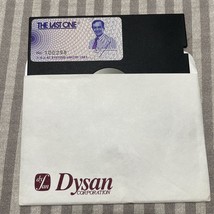Rendered at 13:36:31 04/25/25
Ships from
United States

Shipping options
Seller handling time is 2 business days Details
No shipping price specified to GB
Ships from
United States

Return policy
None: All purchases final
Purchase protection
Payment options
PayPal accepted
PayPal Credit accepted
Venmo accepted
PayPal, MasterCard, Visa, Discover, and American Express accepted
Maestro accepted
Amazon Pay accepted
Nuvei accepted
Shipping options
Seller handling time is 2 business days Details
No shipping price specified to GB
Ships from
United States

Return policy
None: All purchases final
Purchase protection
Payment options
PayPal accepted
PayPal Credit accepted
Venmo accepted
PayPal, MasterCard, Visa, Discover, and American Express accepted
Maestro accepted
Amazon Pay accepted
Nuvei accepted
Item traits
| Category: | |
|---|---|
| Quantity Available: |
Only one in stock, order soon |
| Condition: |
Good |
| Brand: |
Unbranded/Generic |
| Type: |
Programming |
Listing details
| Price discount: |
10% off w/ $200.00 spent |
|---|---|
| Posted for sale: |
More than a week ago |
| Item number: |
1716676322 |
Item description
The Last One is a computer program released in 1981 by the British company D.J. "AI" Systems.[1][2][3][4][5][6][7][8][9][excessive citations] Now obsolete, it took input from a user and generated an executable program in the BASIC computer language.
The Last One
Original author(s)
David James
Developer(s)
D.J. "AI" Systems
Initial release
1981; 43 years ago
Type
Programming language
The software was a program generator, as distinct from an actual programming language, as programs were generated by the user selecting options from menus that would form the basis of the generated code. This was done in a logical sequence that would eventually cause a program to be generated in BASIC. At any time, the user could elect to view a flow chart showing the current progress of the program's design.[10]
The program was available on various different computer platforms of the time.
Added to your wish list!

- Vintage PC Software The Last One DJ AI Systems Limited Floppy Disk 1981
- 1 in stock
- Handling time 2 days.
Get an item reminder
We'll email you a link to your item now and follow up with a single reminder (if you'd like one). That's it! No spam, no hassle.
Already have an account?
Log in and add this item to your wish list.






